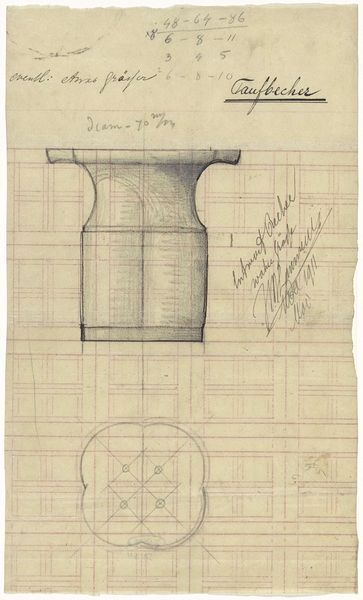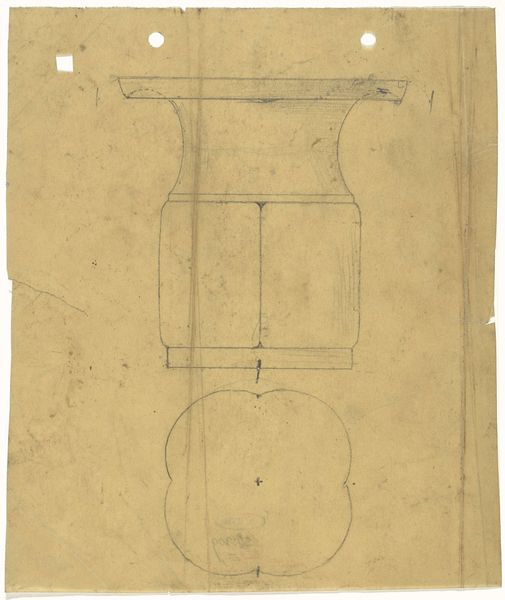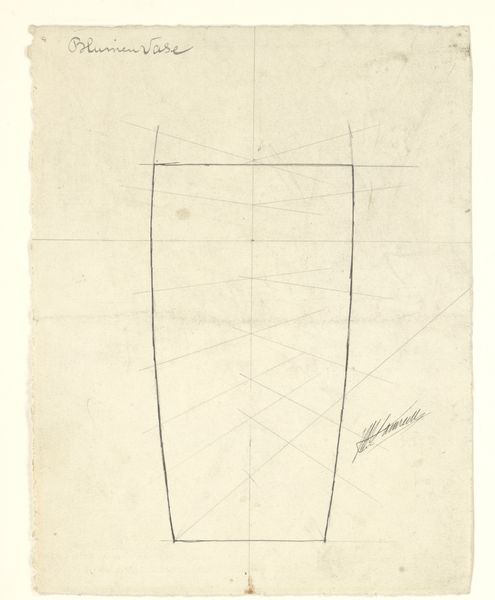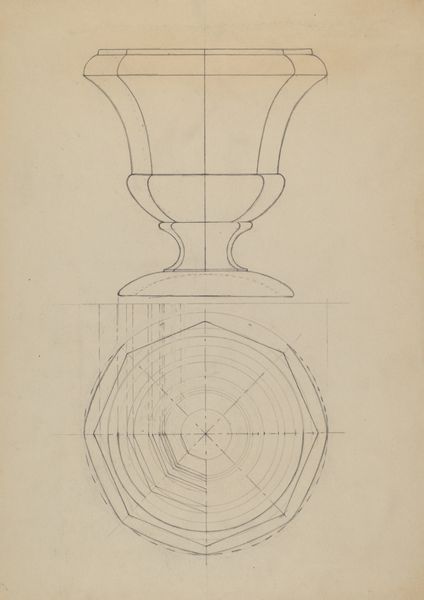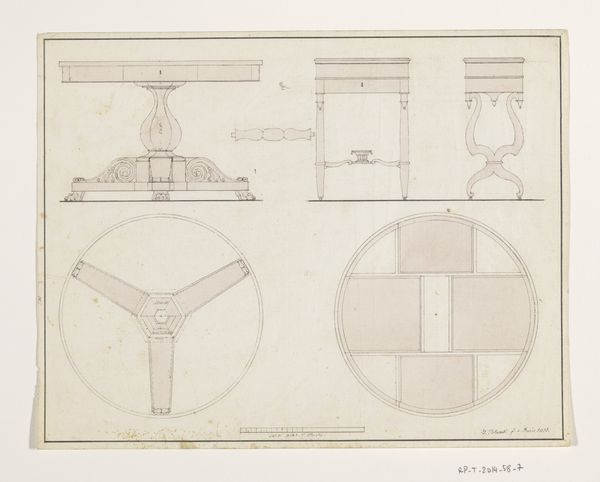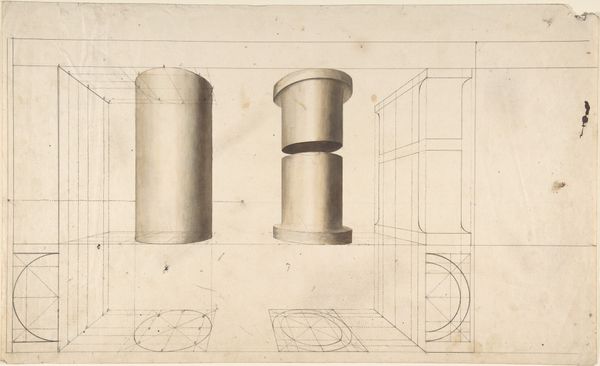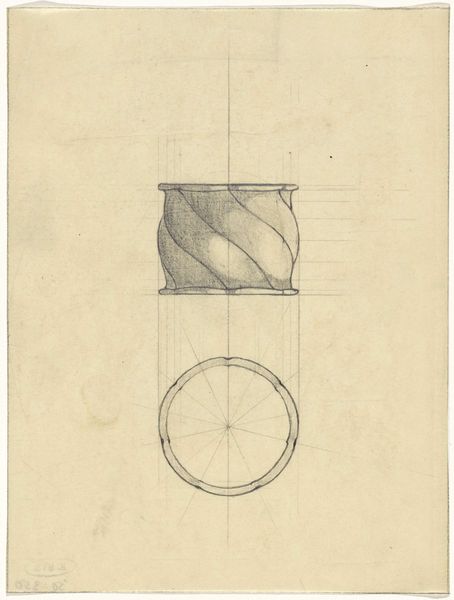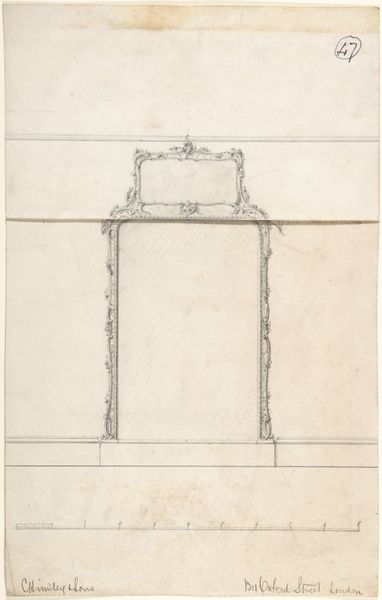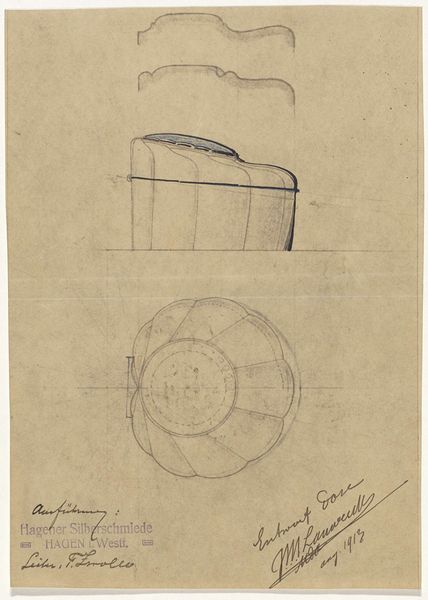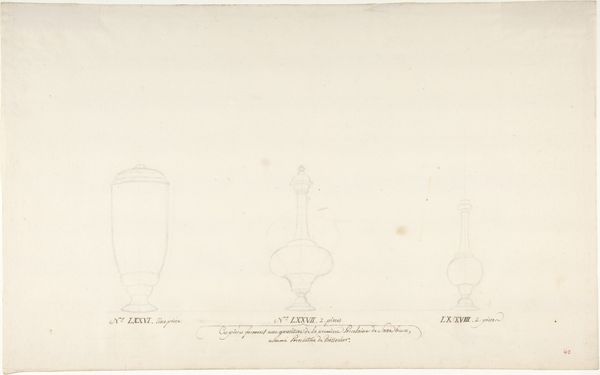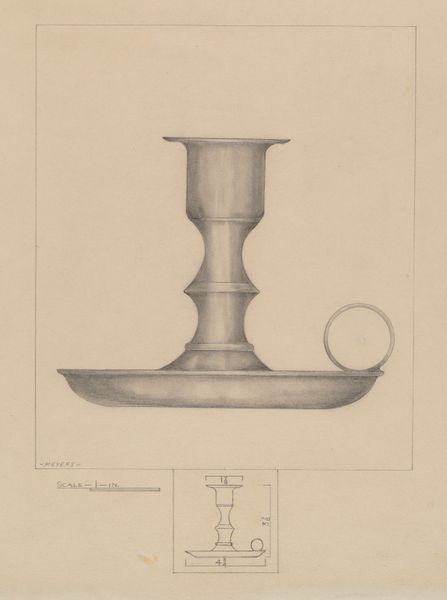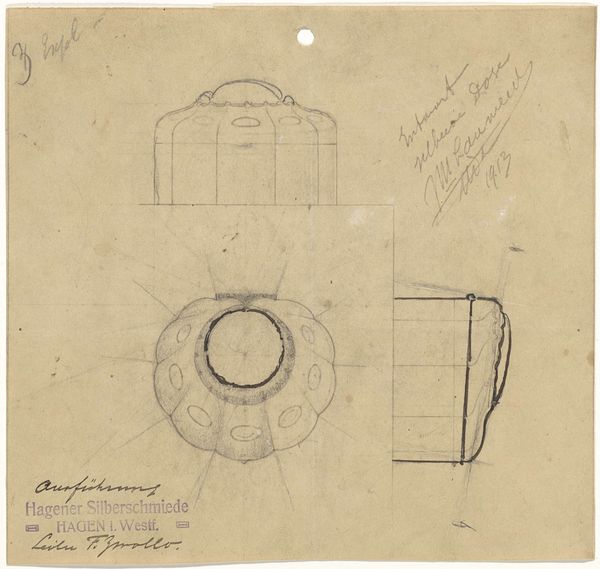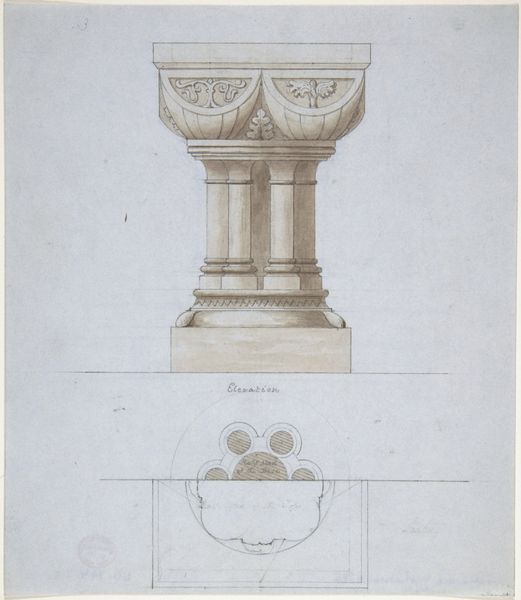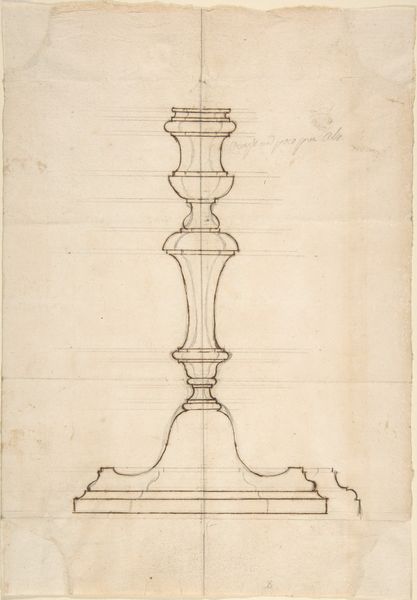
drawing, pencil
#
drawing
#
geometric
#
pencil
Dimensions: height 286 mm, width 200 mm
Copyright: Rijks Museum: Open Domain
Editor: This is "Ontwerp voor een doopbeker," or "Design for a baptismal font," by Mathieu Lauweriks, created sometime between 1874 and 1932. It’s a pencil drawing, mostly geometric, with careful attention to proportion. I'm curious, looking at the lines and the planning involved, what stands out to you? Curator: What interests me most is how this drawing embodies a negotiation between the sacred and the practical. We see the artist working out not just the aesthetics but the *making* of the font. The medium, pencil on what appears to be graph paper, highlights the material and planning behind it, almost like a blueprint for a craftsperson. Editor: That’s an interesting way to see it - the labor involved! I was so focused on the end result that I didn’t consider that. Curator: Precisely! Think about the materials Lauweriks envisioned: stone or metal? How would they affect the ritual it serves? Would this influence access and consumption of religious artifacts by a wider populace? This pencil sketch unveils an intersection where art, craft, and spiritual function. Are those circles just design elements or indicative of a construction process, perhaps influencing later trends in design and manufacturing? Editor: It does make me consider the production and potential implications this design had. Was it common for artists of his time to focus so explicitly on practical production considerations? Curator: It's less about what was "common" and more about recognizing the artist's conscious engagement with materials and making. His emphasis brings us closer to understanding the artwork as part of a tangible, socioeconomic process rather than solely an aesthetic or symbolic object. Editor: That emphasis on materials and production really reframes how I view this piece. Curator: Indeed, shifting from ideal form to material realities enriches our appreciation for design's intricate relation to both artistic intention and societal context.
Comments
No comments
Be the first to comment and join the conversation on the ultimate creative platform.
